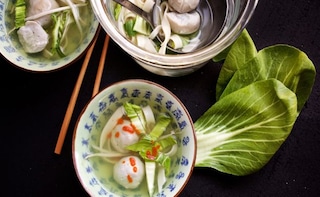Captain Louie's Fish Balls swim in a simple broth with Chinese noodles and bok choy. They also can be eaten as an hors d'oeuvre, with soy sauce or chili oil. MUST CREDIT: Photo by Deb Lindsey for The Washington Post.
Advertisement
Advertisement
Advertisement
Advertisement
For the latest food news, health tips and recipes, like us on Facebook or follow us on Twitter and YouTube.
Advertisement
